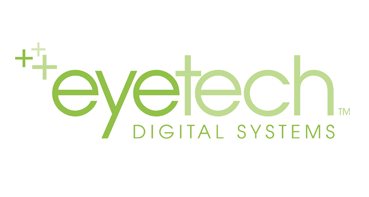

The future depends on novel and advanced sensory technology, such as eye tracking, to allow those with physical or neurological disabilities to better communicate, operate a motorized chair, and take back control of their lives.
One of EyeTech’s most revolutionary applications uses their eye tracking technology to improve the quality of life and enable mobility and independence for those with physical or neurological disabilities. The Centers for Disease Control and Prevention (CDC) reported in 2016 that about 16.1% of adults in the United States have at least one form of physical functioning difficulty.1 The National Spinal Cord Injury Statistical Center also reports that there are approximately 11,000 new cases of spinal cord injuries (SCI), injuries that result in paraplegia and tetraplegia, annually.2 These statistics more than present the necessity for methods of mobility outside of normal convention. Windows 10 currently features a version of EyeTech’s eye tracking software in the settings menu under Ease of Access which is called Eye Control and can be enabled with the appropriate eye tracking hardware. Furthermore, EyeTech has developed a standalone product, with the help of the line of Zynq processors from Xilinx hardware, which can be used by those who are impaired to move their motorized chairs and communicate.
EyeTech also licenses its software to several groups and companies which integrate eye tracking technology into non-EyeTech hardware systems, for a number of other exciting industries. Using EyeTech technology to perform the King Devick Test (K-D), organizations like the Canadian Football League, National Hockey League, and Major League Soccer have been able to analyze their athletes for suspected traumatic brain injuries (TBI)—the most common injury being concussions—simply by observing how players’ eye movements deviate from pre-established normal behavior (Figure 1).
More than 50 percent of the human cortex is used to process visual information and eye tracking is now being used to help provide insights into the brain in a fast and non-invasive way.3 Athletes, however, are certainly not the only people who will inevitably suffer from head injuries. The CDC reported that approximately 1.7 million people sustained a traumatic brain injury (TBI) each year between the years 2002 and 2006 and that a TBI is a contributing factor to about one third of all injury-related deaths in the US. 4 In addition to detecting concussions, it has been shown that eye tracking is able to very accurately diagnose other neurological conditions. Groups from Arizona State and Boston University have even used this technology to assess the signs of Parkinson’s disease and Alzheimer’s disease as well. 5, 6
EyeTech’s eye tracking technology may also be found in a wide range of other applications including iris identification, testing website usability, integration into devices such as smart phones, tablets, televisions, kiosks, and virtual/augmented reality headsets, and analyzing Super Bowl Commercials.
EyeTech utilized off the shelf components from EO for their eye tracking hardware to shorten their lead times and reduce costs. EO offers over 34,000 unique optical components with >96% same day order fulfilment, allowing customers like EyeTech to get the components they need as fast as possible. When no off-the-shelf product meets a customer’s specific needs, modifications can be made to any stock optical component in 2-3 weeks and fully custom optics can be built to their exact specifications. To learn more about EyeTech hardware and software, or their approach to eye tracking and the implications eye tracking may have in your application, visit their website.
or view regional numbers
QUOTE TOOL
enter stock numbers to begin
Copyright 2023, Edmund Optics India Private Limited, #267, Greystone Building, Second Floor, 6th Cross Rd, Binnamangala, Stage 1, Indiranagar, Bengaluru, Karnataka, India 560038
California Consumer Privacy Act (CCPA): Do Not Sell or Share My Personal Information
California Transparency in Supply Chains Act